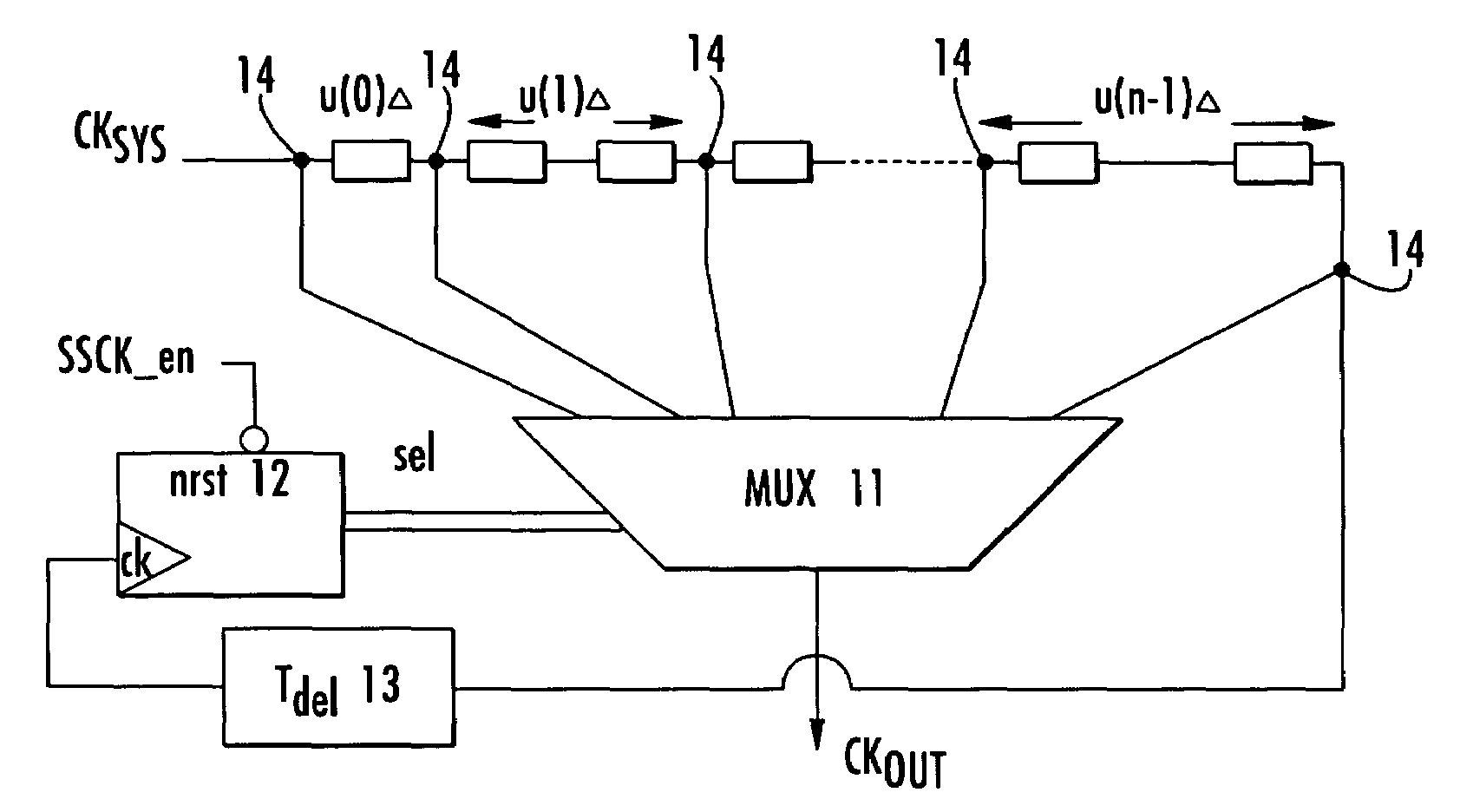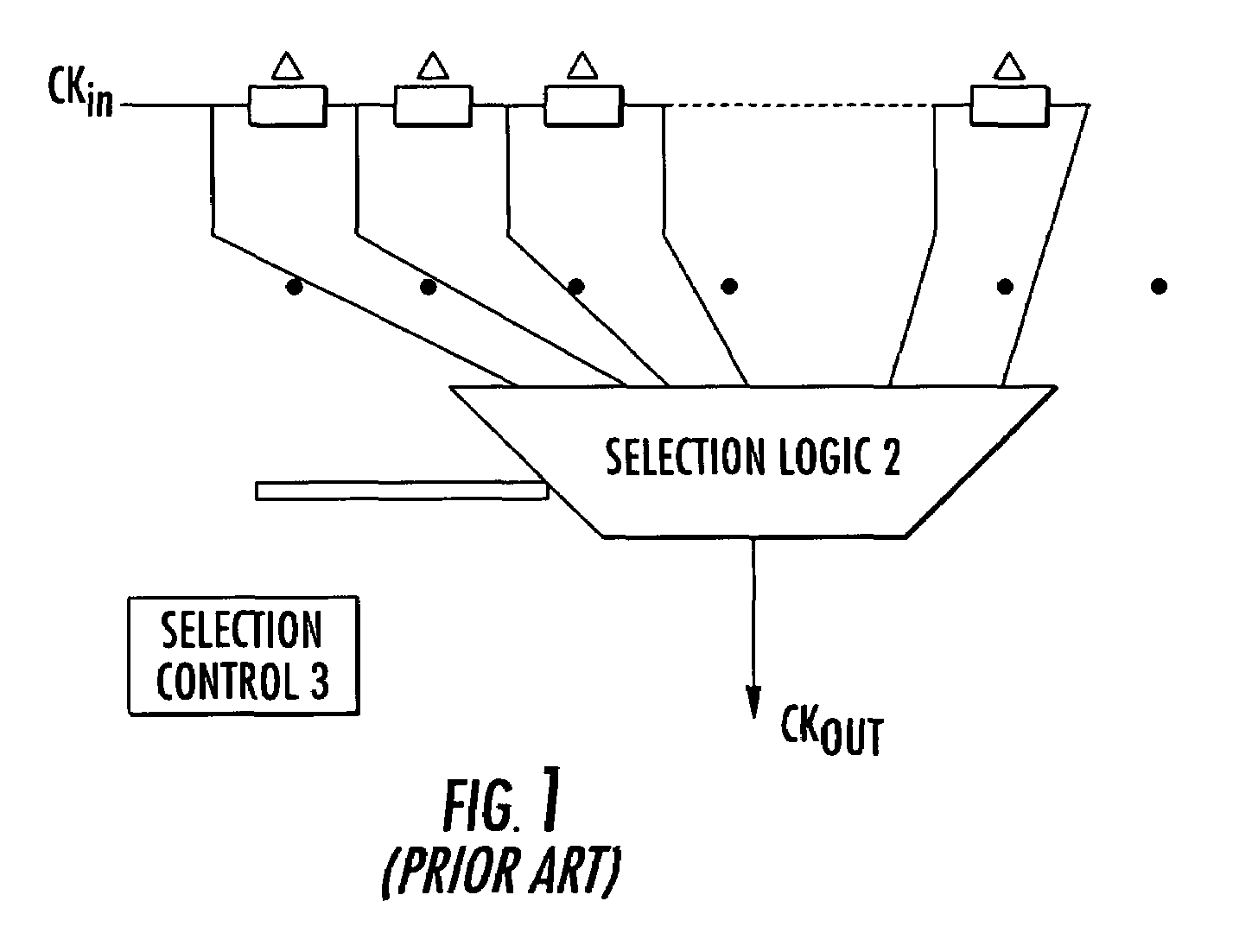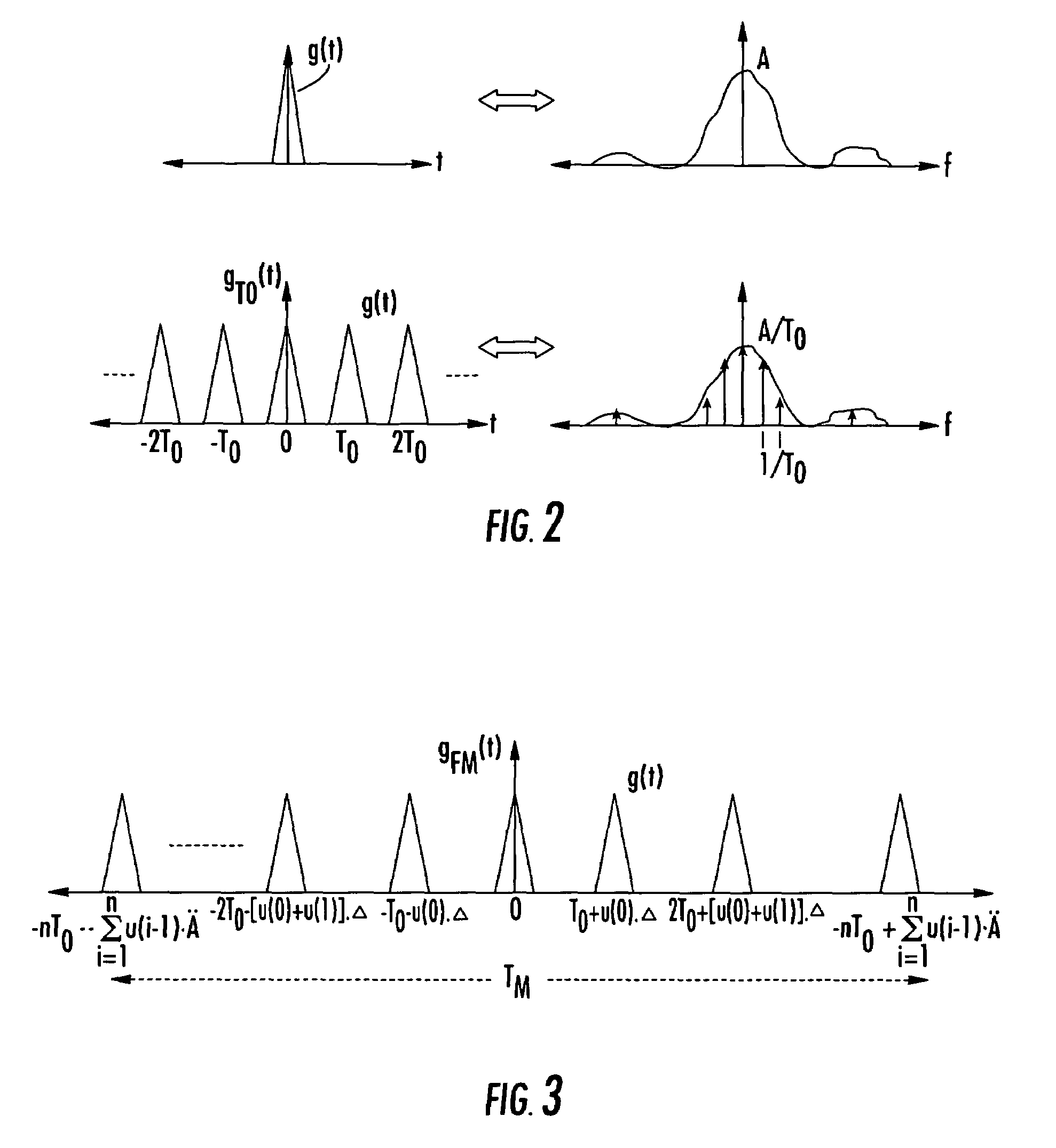Digital clock modulator
a clock modulator and digital clock technology, applied in the direction of generating/distributing signals, pulse techniques, instruments, etc., can solve the problems of inability to use systems, modulating clock generating sources, and arbitrary modulation not generating optimal emi reduction, etc., to reduce emr and increase clock modulation depth
- Summary
- Abstract
- Description
- Claims
- Application Information
AI Technical Summary
Benefits of technology
Problems solved by technology
Method used
Image
Examples
Embodiment Construction
[0042]The circuit of the present invention is based upon manifestation of the following mathematical analysis. Time Period modulation and its spectral representation will initially be discussed.
[0043]An arbitrary time dependent signal g(t) occurring in the time period T0 can be represented in the frequency domain by its Fourier transform G(f). It can be switching current spikes, for example. FIG. 2 shows such an arbitrary time dependent signal g(t) and its frequency domain representation G(f). The Fourier Transform is given by equation (1):
g(t)G(f) (1)
[0044]If g(t) repeats every T0, as shown in FIG. 2, then gT0(t) in the frequency domain would be represented by equation (2):
[0045]gT0(t)⇔1T0·∑m=-∞+∞G(mT0)·δ(f-mT0)(2)
where, the Dirac deltas
[0046]δ(f-mT0)
are the discrete frequency components in the frequency domain occurring at harmonics of frequency (1 / T0). The amplitude is scaled by 1 / T0 over the same Fourier transform function G(f) of equation (1).
[0047]Consider a time depend...
PUM
 Login to View More
Login to View More Abstract
Description
Claims
Application Information
 Login to View More
Login to View More - R&D
- Intellectual Property
- Life Sciences
- Materials
- Tech Scout
- Unparalleled Data Quality
- Higher Quality Content
- 60% Fewer Hallucinations
Browse by: Latest US Patents, China's latest patents, Technical Efficacy Thesaurus, Application Domain, Technology Topic, Popular Technical Reports.
© 2025 PatSnap. All rights reserved.Legal|Privacy policy|Modern Slavery Act Transparency Statement|Sitemap|About US| Contact US: help@patsnap.com



